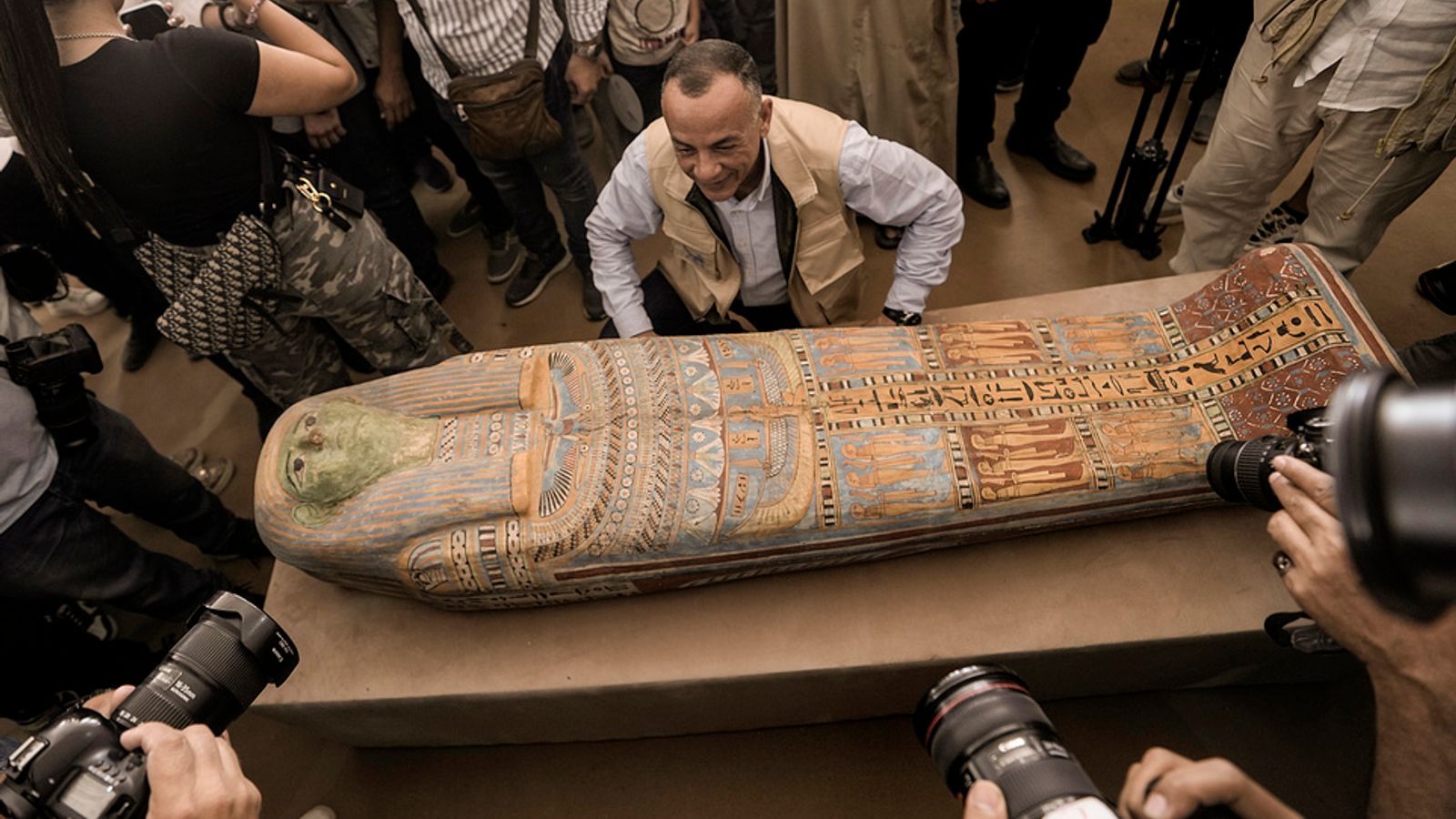Ancient tombs and mummification workshops unearthed in Egypt

Ancient tombs and workshops used for mummification have been unveiled near the Egyptian capital of Cairo.
The workshops were used to mummify humans and sacred animals and date back 2,400 years.
Clay pots, ritual vessels and other items apparently used in mummification were found in the workshops, said Mostafa Waziri, secretary-general of Egypt’s Supreme Council of Antiquities.
The spaces were discovered in the sprawling necropolis of Saqqara, which is a part of Egypt’s ancient capital of Memphis, a UNESCO World Heritage site.
They date back to the 30th Pharaonic Dynasty (380 BC to 343 BC) and the Ptolemaic period (305 BC to 30 BC), Mr Waziri said.
The tombs were for a top official from the Old Kingdom of ancient Egypt and a priest from the New Kingdom, according to Sabri Farag, head of the Saqqara archaeological site.
The Old Kingdom tombs were painted with the names of the dead and their wives, while alabaster statues of the tombs’ owners were found in the New Kingdom tombs.
Archaeologists also discovered tombs dating back 4,400 years which were decorated with “daily life scenes and other life scenes” Mr Waziri told a news conference, according to a report by NBC.
In recent years, Egypt’s government has heavily promoted new archaeological finds to international media and diplomats.
Advertisement
It hopes that such discoveries will help attract more tourists to the country to revive an industry that suffered from political turmoil following the 2011 uprising.

